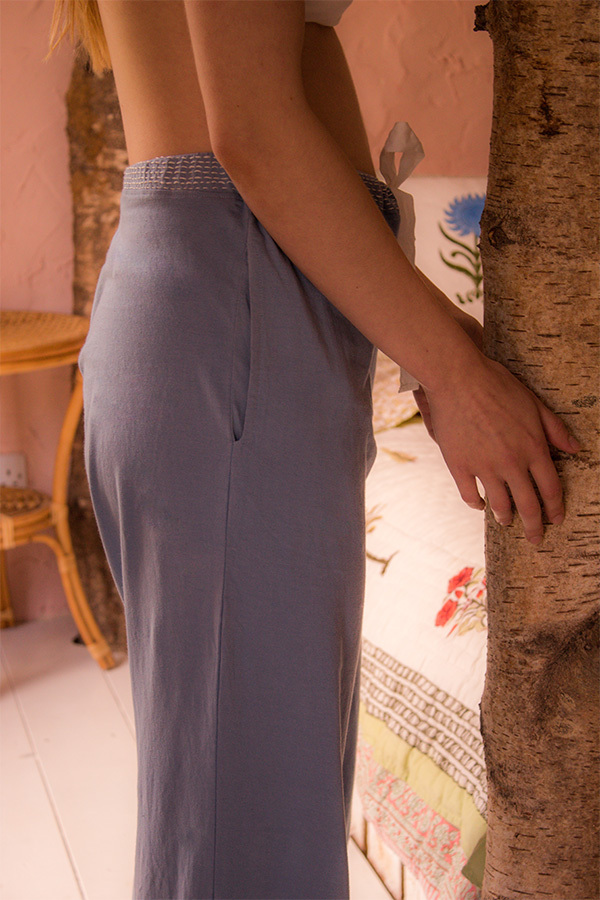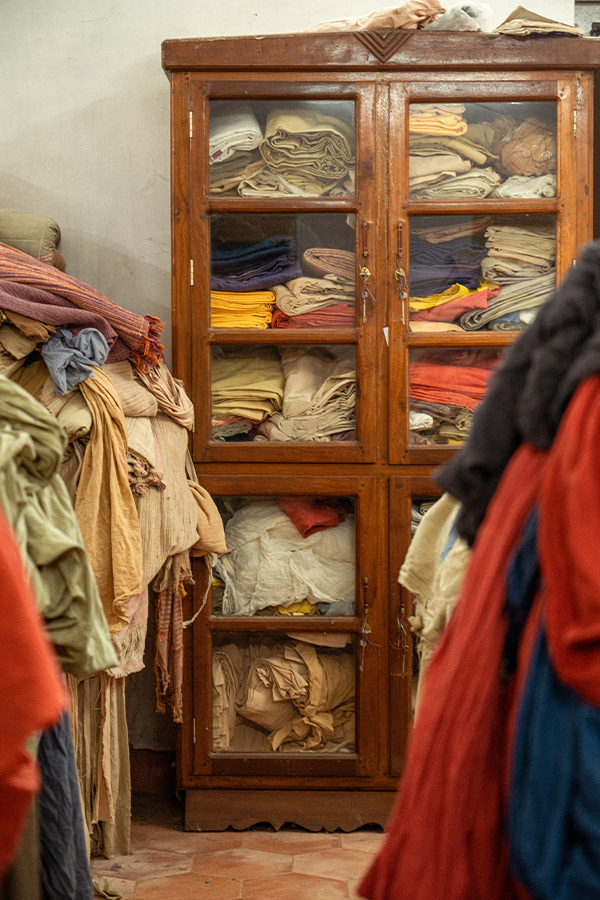TryKind Clothing: The Rebellious Story Against Fast Fashion
Empowering women with sustainable fashion and ethical, eco-friendly practices.
A backdrop of jungle and backwaters set the scene for TryKind founder Alana’s year of rebellion against her fast-fashion job. She left the surroundings of her Soho office to explore the fashion industry’s supply chain. White-budded organic cotton fields, factories in vibrant small towns, Ayurvedic dye, and artisans inspired the creation of TryKind Clothing.
Amid the bustle of women in brightly colored saris and woodland where monkeys came and went, it was never a dull moment. I was grateful to sit down with Alana to discuss her journey through India and the art of Ayurvastra dyeing, which sparked the creation of a brand that combines sustainability and health: TryKind.

Alana, what drew you to visiting India?
Indian food was all the rage for vegetarians in the 1990s due to limited options. Living in Ealing, West London, exposed me to diverse communities, sparking my love for their food and culture. Even on my 5th birthday, I wanted everyone to have biryani with me! So, it’s no surprise that India was my dream destination growing up. During my year of traveling, it was at the top of my list and exceeded all my expectations.
The kindness, tolerance, vibrant colors, passion for life, food, nature, and spirituality felt like home. The sense of community there never lets you feel alone. Instantly, I realized I could not work in the fashion industry while it exploited beautiful countries like India, Sri Lanka, and Bangladesh. This realization prompted me to return to India and explore the supply chain.
I traveled from organic cotton fields to GMO cotton fields, from fast-fashion factories to fantastic sustainable ones powered by solar energy, from eco-packaging units to towers of landfill waste, from impactful women’s empowerment sewing centers to social enterprise hubs, and from stunning Ayurvedic dye centers in the jungle to lakes dyed with toxic chemicals.
I wanted to listen, see the transparency that is sorely lacking in the industry, and learn about the creation process in one of the world’s biggest exporters. This experience helped me understand that there IS a positive way forward. From this, my business plan was born, putting into action everything I had learned.

Why is Ayurvastra dye important to our health, planet and Indian culture?
For 5,000 years, Hindu communities have been using Ayurvastra to prevent illness and maintain health balance. This science, deeply rooted in their culture, is particularly prevalent in Kerala, the home of Ayurveda. It is a vital part of their family livelihood and lifestyle, with knowledge passed down through generations and taught as ancestral wisdom.
The herbs used are grown on family land or on indigenous Adivasi people's land, where nature is worshipped as a god. Ayurvastra is deeply ingrained in these communities.
Because Ayurvastra works harmoniously with nature, it provides countless benefits to the planet. Indigenous people harvest herbs only in season and allow plants to grow at their natural pace, entirely organically. This results in zero waste, as every part of the plant—stem, leaf, root, and more—has a use, and no chemicals are involved in the entire process. In stark contrast, chemical dyes harm the environment as well as the people who create and wear them, often unknowingly.
Ayurvastra is highly effective for numerous health reasons. Some argue that around 60% of what we wear is absorbed into our bodies, while others suggest it could be even more. Just as moisturizers, skin oils, and cosmetics affect our skin, so do our clothes. If you wear garments dyed with azo dyes—found in 70% of high-street clothing—you may be absorbing toxic chemicals such as formaldehyde and petrol derivatives into your body. It is, therefore, no surprise that cancers, infertility, and unborn fetuses exposed to chemicals are increasingly being traced back to clothing.
Ayurvastra offers the opposite experience. Aloe vera, turmeric, indigo flower, and neem leaf are among the plants used in Ayurvastra blends.
The indigo flower is a cooling, natural sedative that aids sleep, alleviates hot flashes during menopause, and calms PMS-related sweats. Neem leaf blends are excellent for the skin, reducing eczema, acne, and psoriasis, while also providing anti-bacterial and anti-microbial benefits that support intimate health. Sappan bark promotes skin health and has anti-inflammatory properties.
In addition to the health benefits for those who wear these garments, Ayurvastra reduces harm to the planet and to garment workers. Natural dyes are more resource-efficient, gentler on our bodies, and do not pollute the environment.

How do you implement this process with TryKind?
The dye process is truly SLOW FASHION. It involves much more than blending natural ingredients. It includes washing organic cotton, filtering the dyes repeatedly with a muslin cloth, heating the dye baths over a fire, cutting and storing the herbs, and treating the dyes with oils to enhance their longevity. Allowing the artisans to work their magic is essential, as this is their craft. They are more than just suppliers; they are Ayurvedic doctors who deeply understand their trade. I feel blessed to work with them every time we reconnect.

Does TryKinds fabric differ from ‘normal’ materials used in mainstream garments?
TryKind's 'buttery soft' fabric makes it incredibly relaxing to wear. This is thanks to the loving hands that create each piece. I want the women purchasing TryKind to cherish and nurture the clothes like an old friend and for it to evoke a sense of sisterhood—like the Sisterhood of the Traveling Pants, quite literally!
Ayurvastra dyes are more than just plant-based; they contain zero chemicals and have remarkable effects on our nervous system, skin, and intimate health. They aid sleep, among many other benefits. In contrast, most mainstream dyes contain chemicals and are often manufactured by machines rather than people. TryKind’s fabric is made with a touch of love and magic.

Has this experience impacted you mentally and physically? - has it changed your perspective?
TryKind has transformed my perspective of the fashion industry and how everything we
TryKind has transformed my perspective on the fashion industry and how everything we consume as humans is a vote for the kind of world we want. We unknowingly consume fast fashion, food, and a rapid lifestyle, but these habits harm us greatly and are ultimately self-destructive.
I used to run around working in the fashion industry, downing junk food and alcohol, and living in the rat race. Now, I consume mindfully (especially when it comes to clothes), eat as healthily as possible, and try to take one day off from media and plans on the weekend to be present and enjoy spontaneous pleasures!
My TryKind journey has been a rollercoaster, but I believe that riding the wave with an open mind is crucial. At first, I focused heavily on specifics and how to achieve things in a particular way. Now, I understand that we can only control so much, and I let the universe guide me. This might sound strange as a business owner, but if something is flowing or working, I roll with it.

Why should others experience this journey too?
I want women to be more curious, equal, and empowered. Asking those important questions—What’s in my clothes? Why am I shopping here? Should I be consuming this? What does this do to my body?—is the first step to making a difference. This is how I discovered what I believe is the solution to solving the climate crisis: women’s equality, chemicals in our clothes, fair trade, and building communities in the Global South! That solution is TryKind Clothing!
To explore the story and purchase TryKind products, visit trykindclothing.com































